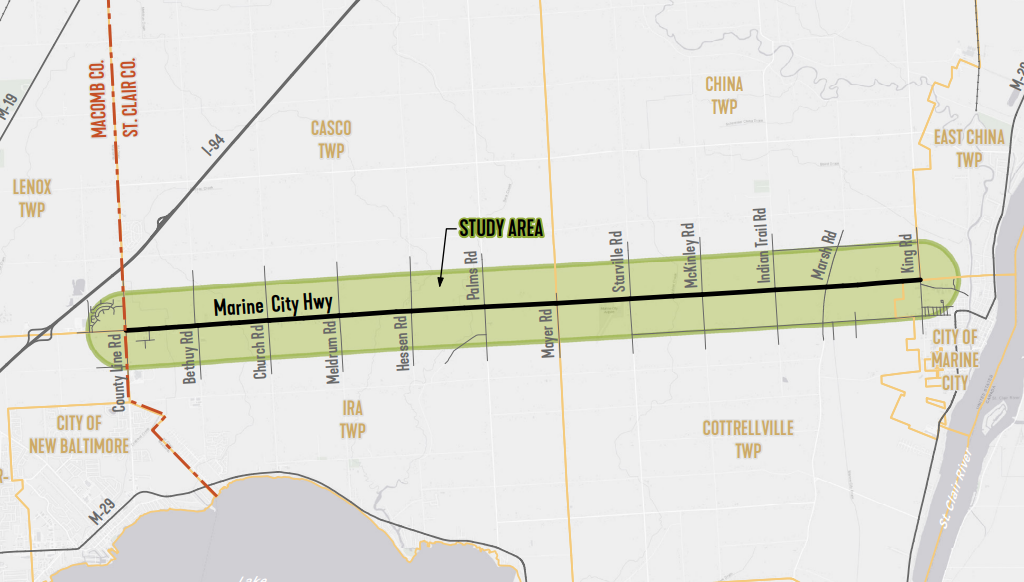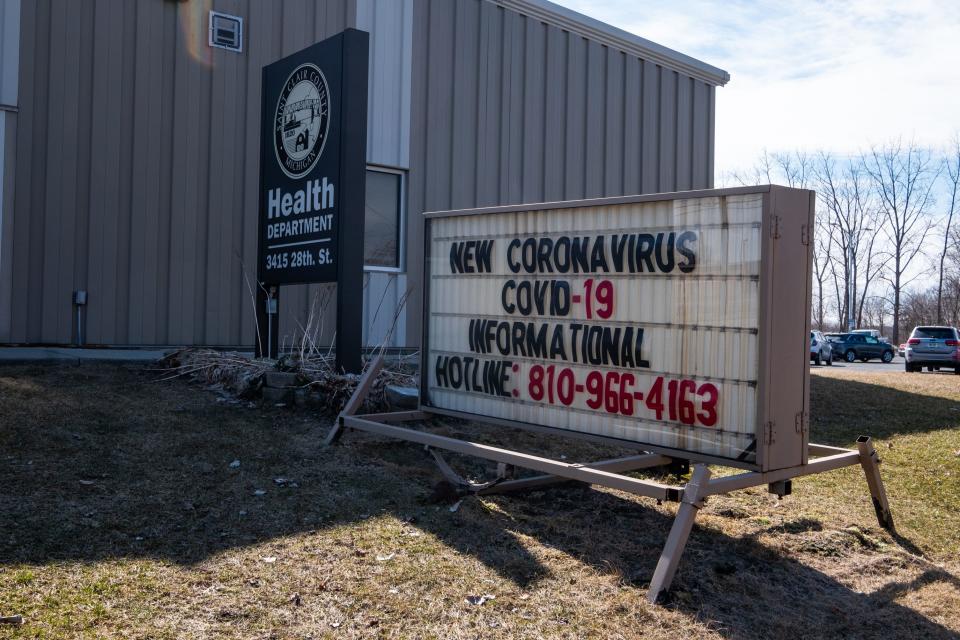St. Clair County officials taking wider view at how to use ARP funds Thursday

St. Clair County officials are delving back into talks about how to spend the remaining millions of the county’s American Rescue Plan Act dollars on Thursday.
Currently, the county has more than $20 million left of the $31 million in ARPA funds it received in 2021, and over the last several months, officials have weighed whether to attribute a large chunk of that to supporting water and sewer infrastructure along a portion of 26 Mile Road, or Marine City Highway, priming the area for future development.
However, when the county board of commissioners meets at 4 p.m. Thursday for a workshop — one that also includes addressing health department building needs — they’ll be met with a much wider view of what the funds could be used on.
County Board Chairman Jeff Bohm, who’s advocated for loaning Ira Township $14 to million to $15 million funds for sewer work off 26 Mile, has more recently begun to walk back the idea in favor of another that would be a fraction of the cost.
And instead, he said he’s expecting to hear more from county administration about other needs that could total $7 million.
In a memo to the board, County Administrator Karry Hepting referenced a lengthy list of potential projects between the county’s regular and mini capital improvement plans — one containing larger facility needs as part of an annual five-year outlook and the other addressing only those that’d cost under $75,000 — that have been categorized based on APRA eligibility.
“There have been recent discussions surrounding the use of ARPA funds for internal projects,” Hepting wrote. “We currently have $43,785,270 of internal capital projects proposed between the two plans.”
This week, Hepting said only a specific area will be brought up to address the $7 million.

“If you look at the items under lost revenue and responding to (a) public health emergency, those are the ones they will hopefully consider,” she said via email. “A large portion is a health department building.”
The total list includes $23.8 million for a health department building, only a portion of which would be eligible for ARPA funds.
A separate space study, also now before commissioners, details a recommendation to either expand and renovate the health department’s existing building at $17.7 million or build a new building and new service garage for $15.8 million. That study, however, was issued last May.
Is the 26 Mile discussion over? Not yet, Bohm says.
The idea to loan Ira Township funds — a payback mechanism for which hasn’t been formally established — has been met with opposition from some residents in the 26 Mile Road area.
And arguments against it have largely followed two threads: Those who understood the county’s push to make the corridor buildable but not the loan, and those who hoped to retain the area’s rural setting and preferred to spend ARPA funds countywide.
Although the county board originally agreed to investigate the 26 Mile Road direction nearly two years ago, the feedback among some commissioners has been similarly mixed since last November’s election.
Moving forward, and with the experience related to raising funds via a tax capture around the expanding Magna Electrical Vehicle Structures plant, Bohm said they’re looking at other ways they could fund infrastructure along one area of the 26 Mile corridor.
More specifically, he referred to a meeting earlier this year when a plan to establish a local development finance authority, which is expected to finance major water infrastructure upgrades in St. Clair, got the green light.
“I walked out of that meeting and kind of the obvious was in front of me,” Bohm said. “If we can get this thing engineered and if a company locates somewhere that is going to give me X amount of time to get water, sewer, those types of things (built), the company ultimately would be paying for that out of their tax capture. So, I kind of stepped back and said we don’t need to spend $15 million on this thing.”
There have been a couple of estimates of where water and sewer infrastructure could be built along 26 Mile, and local officials have put a larger focus on a new sewer line off Palms Road.
Bohm said that a “sewer line cuts down the time on development,” and that having engineering already on the shelf could help entice builders down the road — the thinking being infrastructure that’d have the capacity to support development could be built while a company or manufacturer breaks ground on a new facility.
Currently, Bohm said Ira is getting requests for engineering services, and now, he wants to look at using ARP funds to finance that cost, which he put “in the million-dollar range.”
“If you’re doing anything along this corridor, Palms is the key to having to get the sewer to that,” he said in an interview Tuesday. “We’ve asked for a congressional earmark for $5 million toward this project. We have not heard back yet.”
The county board’s regular meeting will follow the commissioners’ workshop at 6 p.m. Both will be held in the second-floor meeting room at the county building, 200 Grand River Ave., in Port Huron.
Contact Jackie Smith at (810) 989-6270 or jssmith@gannett.com. Follow her on Twitter @Jackie20Smith.
This article originally appeared on Port Huron Times Herald: St. Clair County officials taking wider view at how to use ARP funds Thursday

